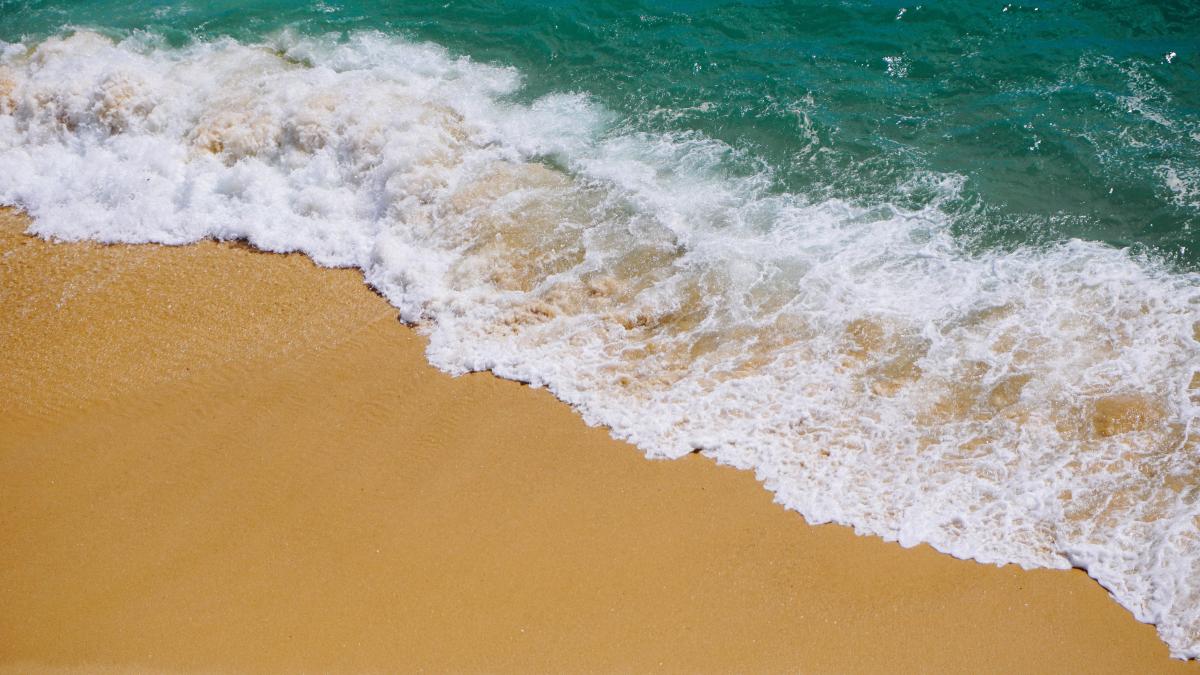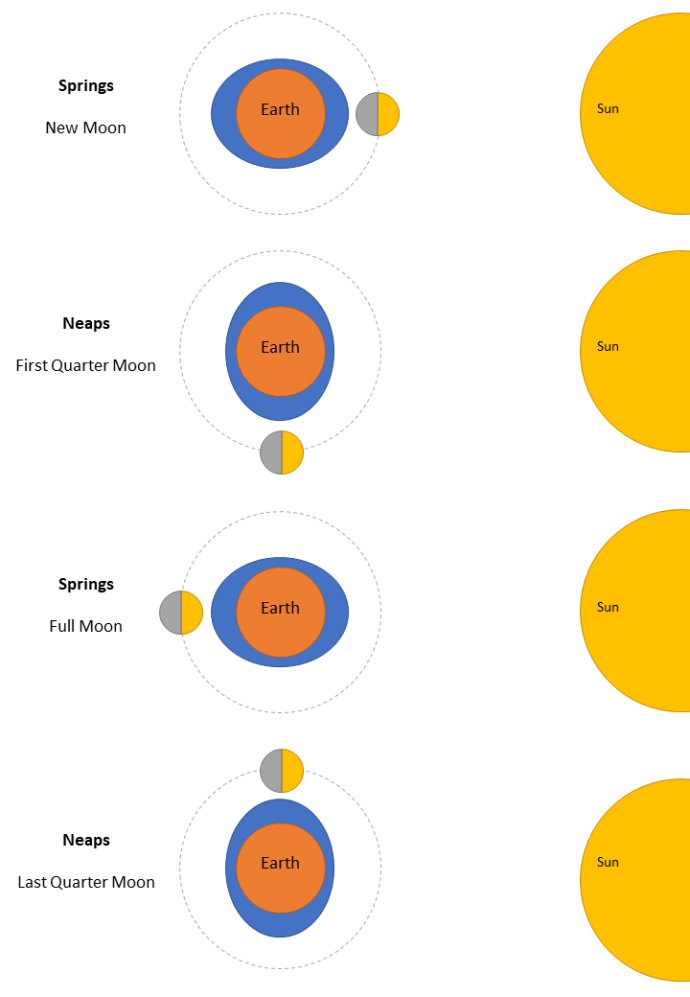The level of the sea rises and falls about two times each day. We call these changes tides.
The gravitational pull of the Moon creates tides on Earth . The Moon's gravity pulls the Earth's oceans towards the Moon. This causes a high tide on the side of the Earth nearest the Moon. However, on the opposite side of the Earth, furthest from the Moon we also see a high tide!
The Sun's gravitational pull also has an effect on Earth's tides. When the gravity of the Sun and Moon are pulling in the same direction, the tides are especially high. We call these 'Spring tides'. Spring tides happen at full Moon and at new Moon.


- Why Do We Have Tides?
Stage 1: The strength of the Moon's gravitational pull varies across the Earth
Image CreditThis work by The Schools' Observatory is licensed under All rights reserved
CreditThis work by The Schools' Observatory is licensed under All rights reservedThe orange arrows in the diagram show the strength of the Moon's gravitational force across the Earth. The length of the arrows tells you how strong it is. The longer the arrow, the stronger the Moon's gravitational pull. Remember the Earth is constantly spinning on its axis.
The arrows show the force is the strongest on the surface of the Earth facing towards the Moon. It is weaker at the centre of the Earth. It is the weakest at the surface of the Earth facing away from the Moon.
Stage 2: The tidal force also varies across the Earth
Image CreditThis work by The Schools' Observatory is licensed under All rights reserved
CreditThis work by The Schools' Observatory is licensed under All rights reservedIt is the difference in the forces at the surface and centre of the Earth that causes the tides. We call this 'tidal force'. The blue arrows in the diagram show where there is a tidal force and the direction it is acting. You can see a tidal force on the surface of the Earth facing towards the Moon. But there is also a tidal force on the opposite side of the Earth, on the surface facing away the Moon.
Stage 3: Water flows towards the peaks of the tidal force
Image CreditThis work by The Schools' Observatory is licensed under All rights reserved
CreditThis work by The Schools' Observatory is licensed under All rights reservedThe tidal force is not strong enough to change the solid rock in the Earth. But the tidal force is strong enough to move liquid water. The water in the Earth's oceans flows to form a bulge where the tidal force is strongest. The result is two bulges on opposite sides of the Earth. We get two tides each day because the Earth is always spinning. We get one high tide when our part of the Earth turns through the bulge nearest the Moon. And we get another high tide when our part of the Earth turns through the bulge furthest from the Moon.
